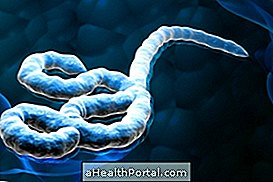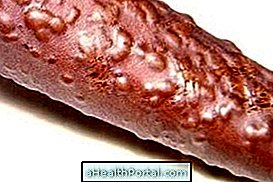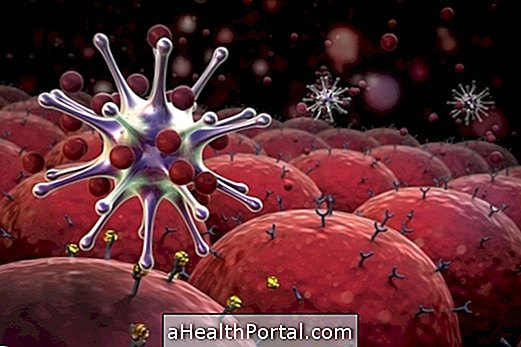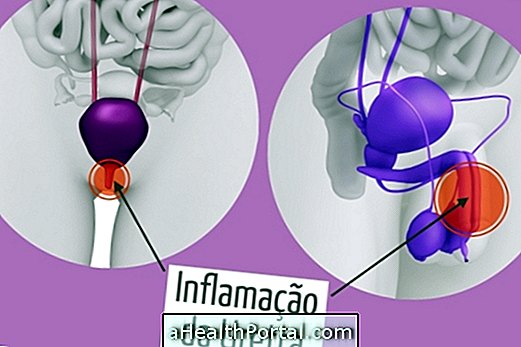Amebiasis, also known as amebic dysentery, is an intestinal infection caused by the protozoan Entamoeba histolytica, which causes severe diarrhea, fever, chills and feces with blood or whitish secretions.
This protozoan, although it may arise in any region and infect any person, is more common in tropical regions with poor sanitary conditions, especially affecting infants and toddlers who like to play on the floor and have a habit of putting everything in their mouths.
Although it is relatively easy to treat, when it is not diagnosed in time Amebiasis can be life-threatening, so whenever symptoms suggestive of infection appear, especially in children, it is very important to go to the emergency room.
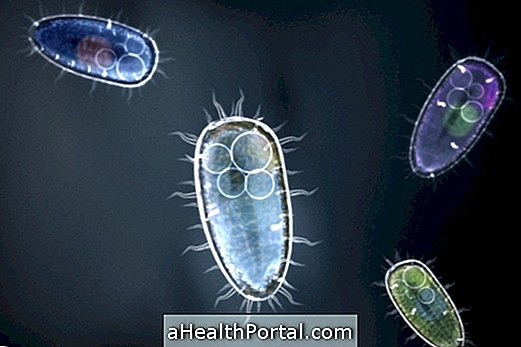
Main symptoms
Some of the main symptoms that may indicate the presence of Amebiasis are:
- Mild or moderate abdominal discomfort;
- Blood or secretions in the stool;
- Severe diarrhea or loose stools;
- Fever and chills;
- Nausea and nausea;
- Tiredness.
These are the first symptoms of infection, however, when not treated properly, Entamoeba histolytica is able to cross the wall of the intestine and spread cysts through the blood, reaching other important organs such as liver, lung, brain or heart, causing abscesses, infections and, in more serious cases, death.
How to confirm the diagnosis
The diagnosis of this infection can be made through the observation and analysis of the sensed symptoms.
To confirm suspicions, the doctor may also ask for a stool test, which may need to be repeated for several days, as the parasite is not always found in the stool. In addition, in some cases a specific blood test may also be indicated, which helps to detect whether the infection is present or not.
When there is a suspicion that the infection is already spread throughout the body, other tests such as ultrasound or CT scan may be done, for example, to check for injuries to other organs.
What causes amebiasis
Amebiasis is an intestinal infection caused by the protozoan Entamoeba histolytica, which can enter the human body when eating cysts through food or water contaminated with feces.
When the cysts of Entamoeba histolytica enter the body, they are lodged in the walls of the digestive tract and release active forms of the parasite, which eventually reproduce and migrate to the large intestine where it can later pass through the wall of the intestine and spread through Whole body.
The person infected with Entamoeba histolytica can infect others if their faeces contaminate soil or water used for drinking, washing dishes or bathing. In this way, it is very important to avoid using any type of water that could be contaminated with sewage. Learn about other diseases that can be caused by sewage in 7 Diseases caused by Sewage.

How is the treatment done?
Treatment for uncomplicated intestinal amebiasis is usually done only with the ingestion of Metronidazole capsules for up to 10 days in a row, although the doctor may also prescribe some medicine for nausea such as Domperidone or Metoclopramide if this symptom is causing a lot of discomfort.
Even in the most advanced cases, where amebiasis is spread to other parts of the body, in addition to treatment with Metronidazole, attempts should also be made to resolve organ damage. In rare cases, it may even be necessary to have surgery to remove the protozoa from the affected organs.
How to avoid getting this disease
In order to protect against Entamoeba histolytica infection, contact with sewage, contaminated or untreated water, floods, mud or rivers with standing water should be avoided, and the use of non-chlorinated pools should be avoided.
In addition, if the sanitation conditions in the city where you live are not the best, you should always boil the water before using it, to wash food or to drink. Another option is to disinfect and purify the water at home, which can be done using the use of Sodium Hypochlorite. See how in What it is, what it is for and how to use Sodium Hypochlorite.



